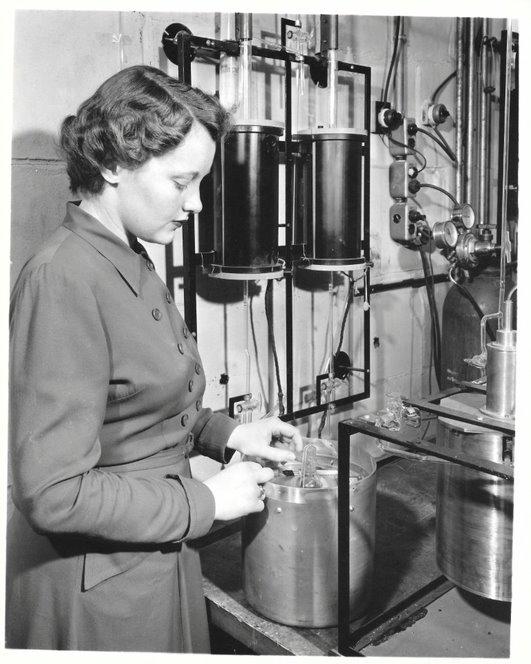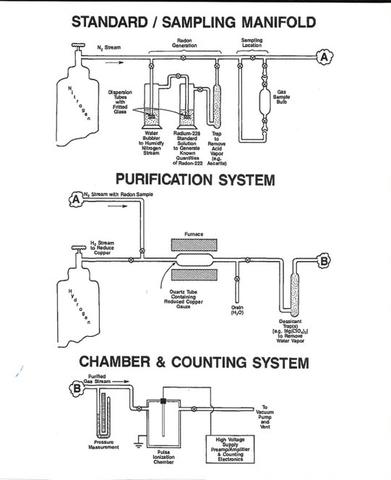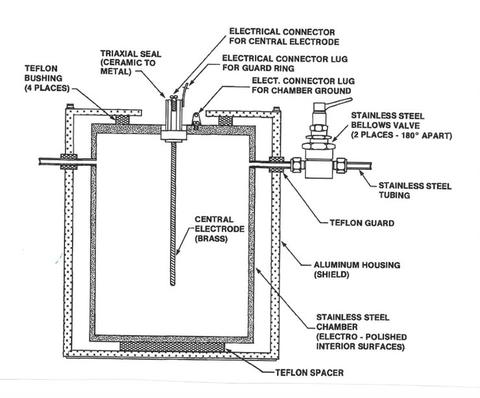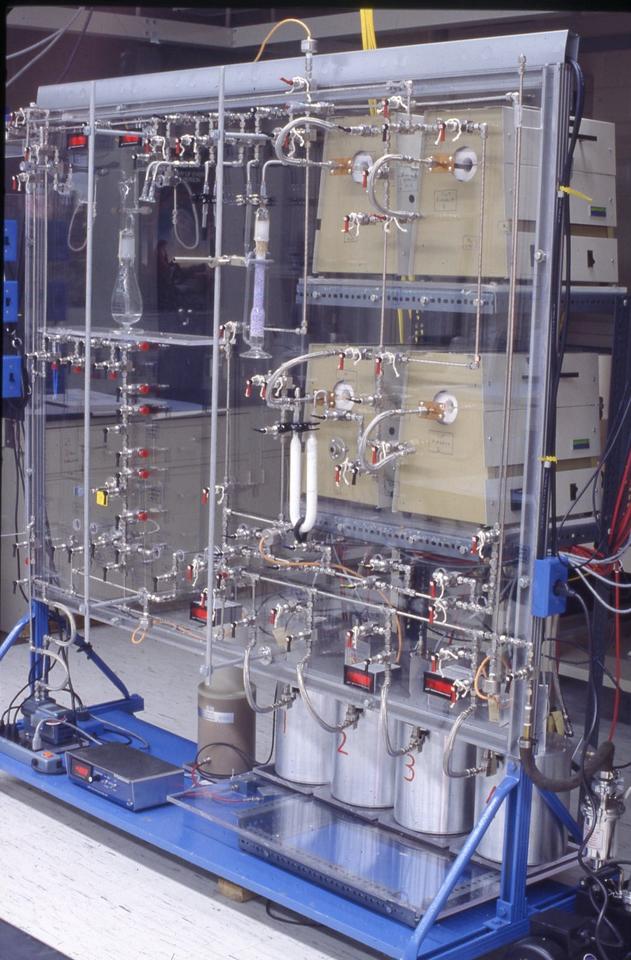Radon Calibration Facility
Radon-222 is a naturally occurring radioactive byproduct of radium-226. Radon is a known carcinogen, and the radon detection and mitigation industry depends on accurate environmental measurements. The National Institute of Standards and Technology (NIST) and its predecessor, the National Bureau of Standards (NBS), have provided the national standards for radon measurements and calibrations since the 1940s.

Today’s primary radon-222 calibration system, introduced in the early 1990s, is a modernized and expanded version based on the design of the original system from the 1940s. At the time this new system was being designed, consideration was given to possibly selecting an alternative measurement method for use as the primary standard. However, despite the passage of 50 years, researchers did not find any other available method or instrumentation that was more advantageous or superior to the original pulse ionization chamber.


In this pulse ionization design, a gas-filled chamber with a cathode and anode measures the charge from the number of ion pairs created within the gas by the emission of alpha particles (two protons and two neutrons, identical to a helium nucleus) from radon and its radioactive daughters. In a pulse ionization chamber, a separate electrical pulse is generated by each alpha particle.


